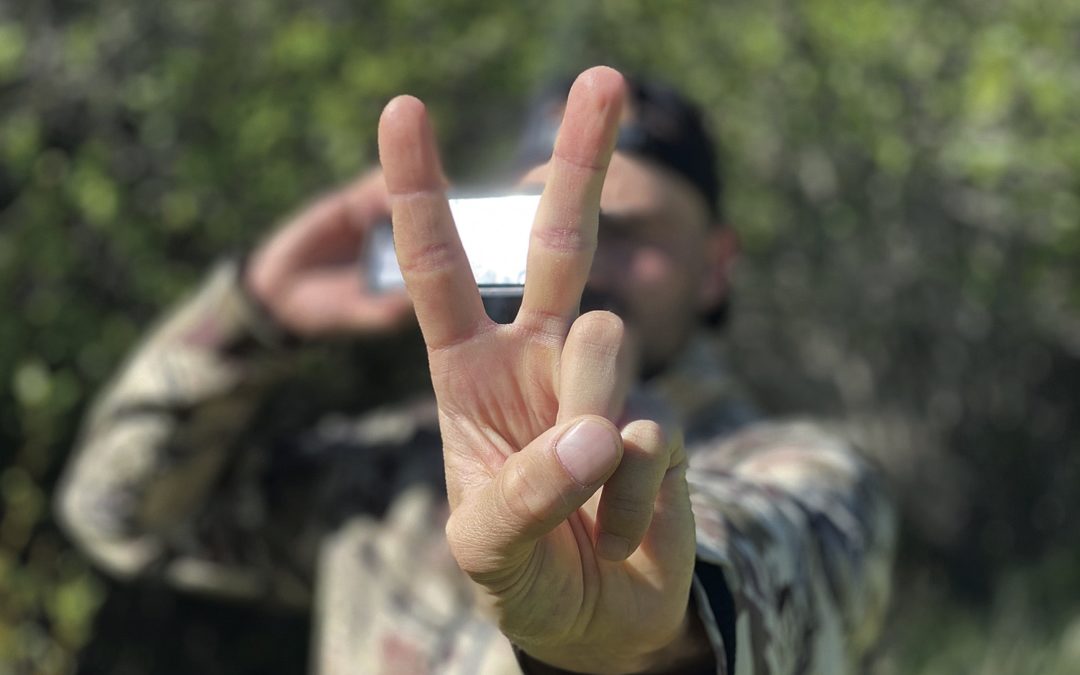
NOTICE: Certain links on this post may earn a commission for Western Hunter Magazine from Amazon or our other affiliate partners when you make a purchase. Thank you for your support.
Remi Warren’s Top 5 Most Underrated Gear Items
Some of the most useful hunting gear in your pack may not be hunting gear at all. I have listed my top five most underrated pieces of kit and how to constantly repurpose them for many useful tasks that will change the way you think about what you bring on a hunt.
When I analyze what is in my pack, I want something that is useful, necessary, and has multiple purposes. While some essential gear is singularly-purposed and vital to success (binoculars, bow, etc.), the most underrated gear in my mind is stuff that has almost limitless purposes or at least multiple practical uses. I am going to share my favorite underrated gear and hunt-changing tricks with ordinary stuff that should be in every hunter’s pack; “MacGyver-ing” new breath into gear you probably already have in your pack.
1. Water Bottle
When it comes to a form of water transport, I choose a bottle over a bladder. The extra uses I get out of the bottle outweigh the convenience of a water bladder for me.
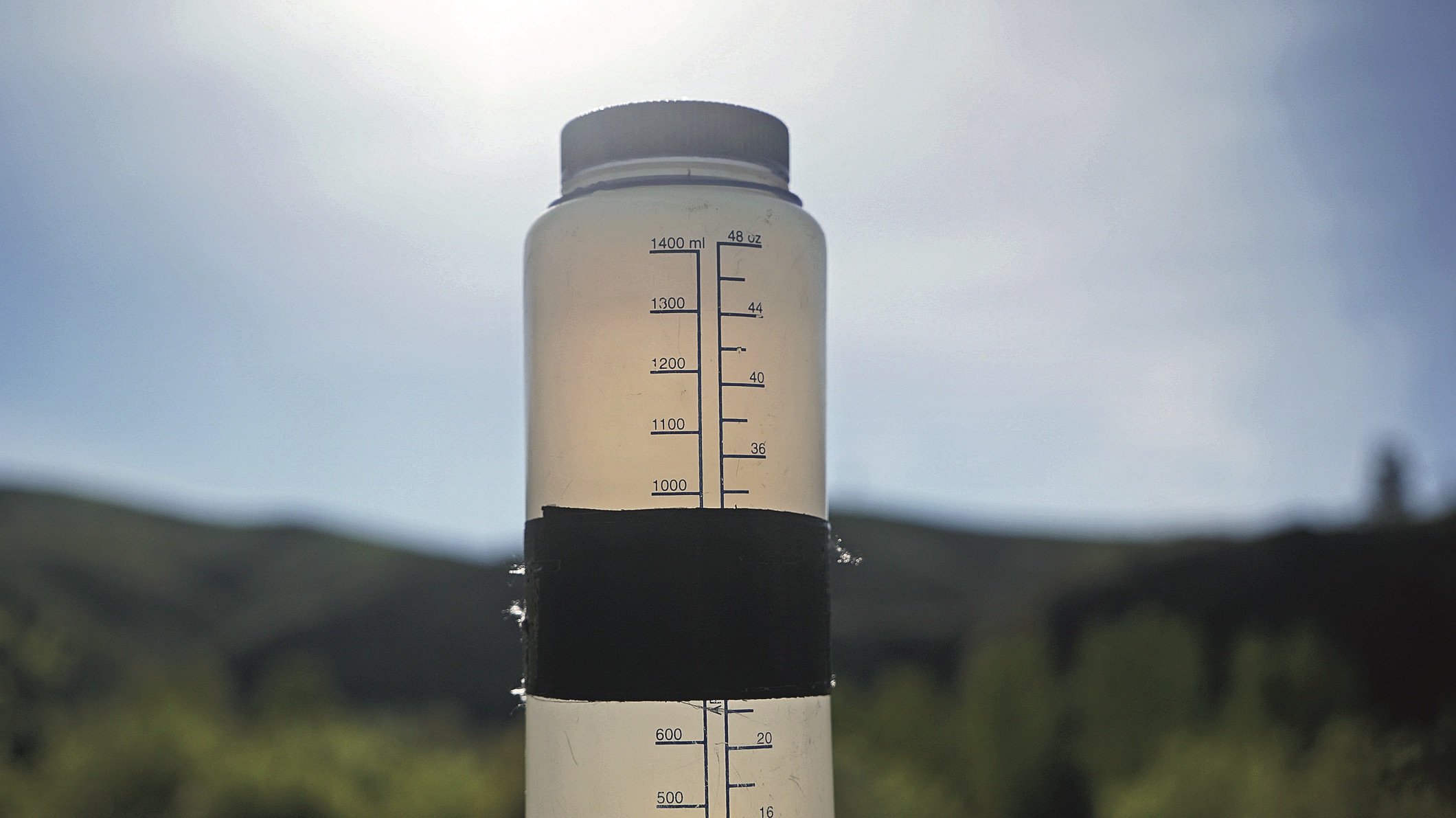
Tape Holder
Wrap your bottle with duct tape. It is a convenient storage spot and quick to get to or find when you need it. I mostly use duct tape to bandage cuts or for foot care to prevent blisters. Having it on a bottle makes it easy to use quickly with minimal searching or effort.
Roll Out
A water bottle is a great backcountry massage therapist. If you have a long day, use the bottle to roll out tight muscles to help with recovery and prevent yourself from getting sore. Place the bottle on the ground and use your bodyweight on top of the bottle, rolling it over sore spots to break up lactic acid stored in your muscles.
Weight for a Heaving Line
The easiest way to set a line to hoist your camp food from bears or get that paracord over a high limb to hoist some quarters is to tie the cord to your bottle and toss it over a high branch. The weight and shape of a bottle makes it easy to throw and does not get caught up as much as other items like sticks.
Heater
On a cold night, fill the bottle with hot water, seal the lid tight and bring it into your sleeping bag with you. It is a great way to buck the cold and start out with a good night’s sleep. I have used this tactic many times late season and even early season when the temperatures drop suddenly.
Strange bonus for the bold:
The strangest bottle use I have ever heard of is from a friend who told me he keeps one in the tent to pee in. Not my idea of a great bottle use, but different strokes for different folks. Lots of people hate going out in the cold when nature calls. The weird part is when you wash it out in the morning and drink from it… Hey, some people have grit in different places.
2. Phone
While a smartphone may be an integral part of everyday life and something you take on your hunt anyway, there are a few uses that help land it on the list for hunting specific applications outside of the ordinary uses.
Camera Hunt Hack
Having a camera on your phone is great to preserve memories of the hunt and adventure, but it can also be a tool in success. If you are stalking an animal that you will lose sight of, take a picture from your first vantage so you can look back at it as you get closer. Having that original view can help verify that you are stalking to the correct location by lining up reference points. It works especially well when you have to stalk in from the back side of the mountain or draw.
Field Judge Accurately
Another great use is to help you field judge or score an animal you are looking at by using a photo taken on the phone to measure out the rack. When field judging mule deer for example, take a picture through the spotting scope with your phone. You can use this picture to make yourself a “ruler-to-scale” from a small stick or piece of paper that you can use to accurately score the deer. Put your stick or paper up against the screen and make it the size of the deer’s ear (from tip to where the ear opens, not to the head). This will represent approximately 7 ½ - 8” depending on the area. Deer ear size varies from area to area so try and measure a few deer ears from where you will be hunting (deer further north tend to have ears that measure 8”). Once you have made your ruler, you can put it on the screen and measure up the buck just like you would with a tape measure.
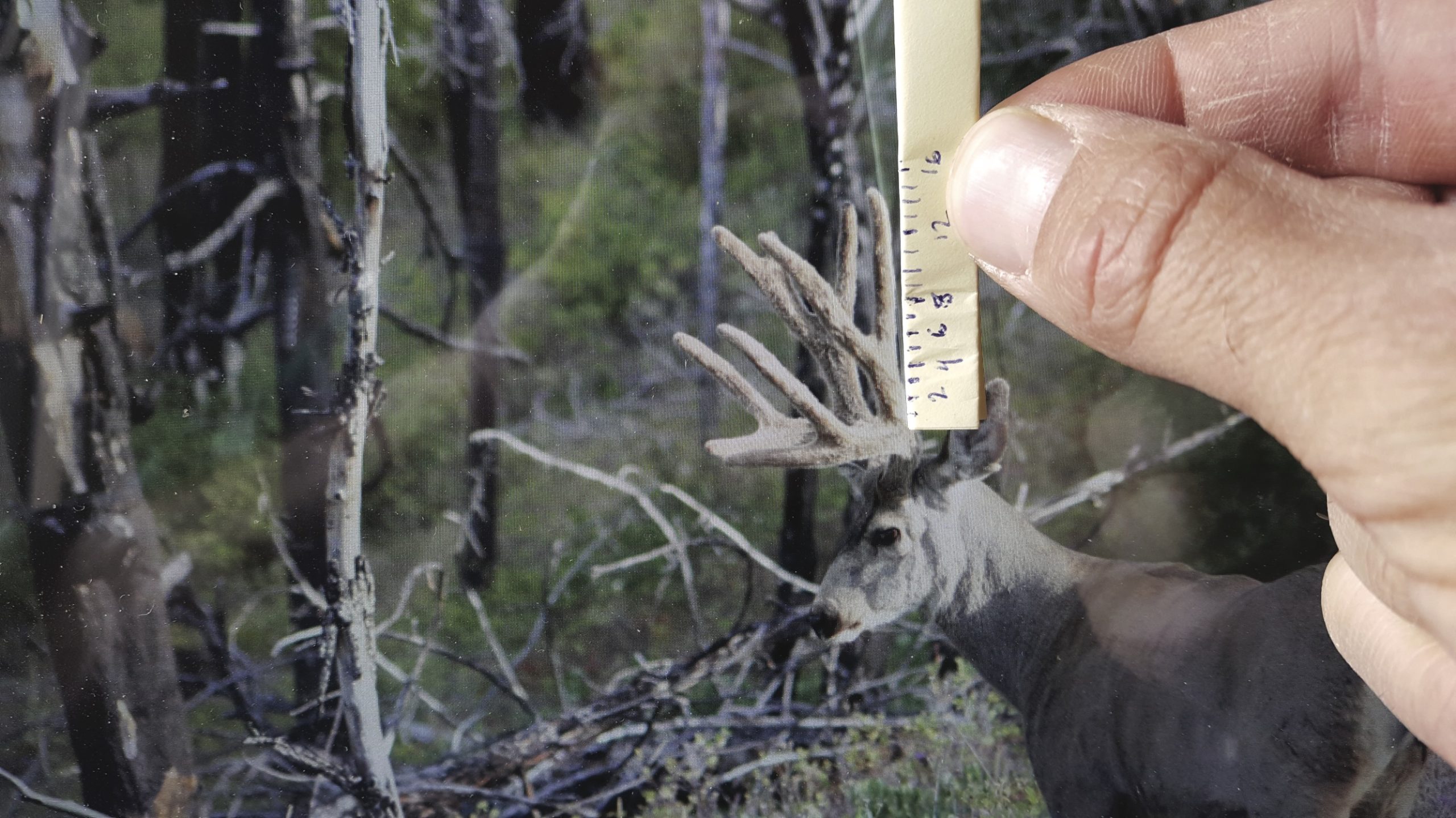
You can measure the circumference of the antlers by using the deer’s eyes. Make a circumference ruler, measuring across the deer’s eyeball which is approximately 1.3”. Since you can’t see all the way around the antler in a photo, compare the “eye-diameter-ruler” to the deer’s antler – 1.3” equals a 4” circumference (if the antler is larger than the ruler its circumference is greater than 4”).
For the width measurement, the natural alert position ear span is 20-22 inches (depending on age and body size). Once you have made your “rulers”, use them to measure the horns on the screen. It can be extremely accurate if you are able to get good pictures.
Hint: you must make a new “ruler” for each new picture or zoom level. I normally keep a piece of paper and pen in my pocket to make my rulers-to-scale with. With the pen and paper, you can mark the ruler out to the inch. For example, if the deer where you are hunting average 8” ears, marking the paper in 8ths will help you create a very accurate measurement. This method is easy and helps get an accurate score even after you get home by pulling the photo up on a computer. You are also able to field judge gross scores with this method with surprising accuracy.
Solo Shooting Spotter
If you are taking a shot and you have no one there to verify your hit, put your phone into video mode and attach it to a spotting scope with a digiscoping system. Hit record and take your shot. You can review the shot to make sure it was a good hit and see what happened after if the rifle recoil caused you to lose your sight picture during impact. This is extremely handy for practice shooting as well. I use it when I am taking long distance shots at the range to see where my bullet hits without the need of a spotter.
Maps & GPS
While this should be common knowledge by now, it bears repeating because it is super handy to use your phone as a GPS. The GPS works without service as long as the maps are downloaded ahead of time. To save battery, you can put your phone into airplane mode. Some phones also have a battery saver feature which really extends the life in the field.
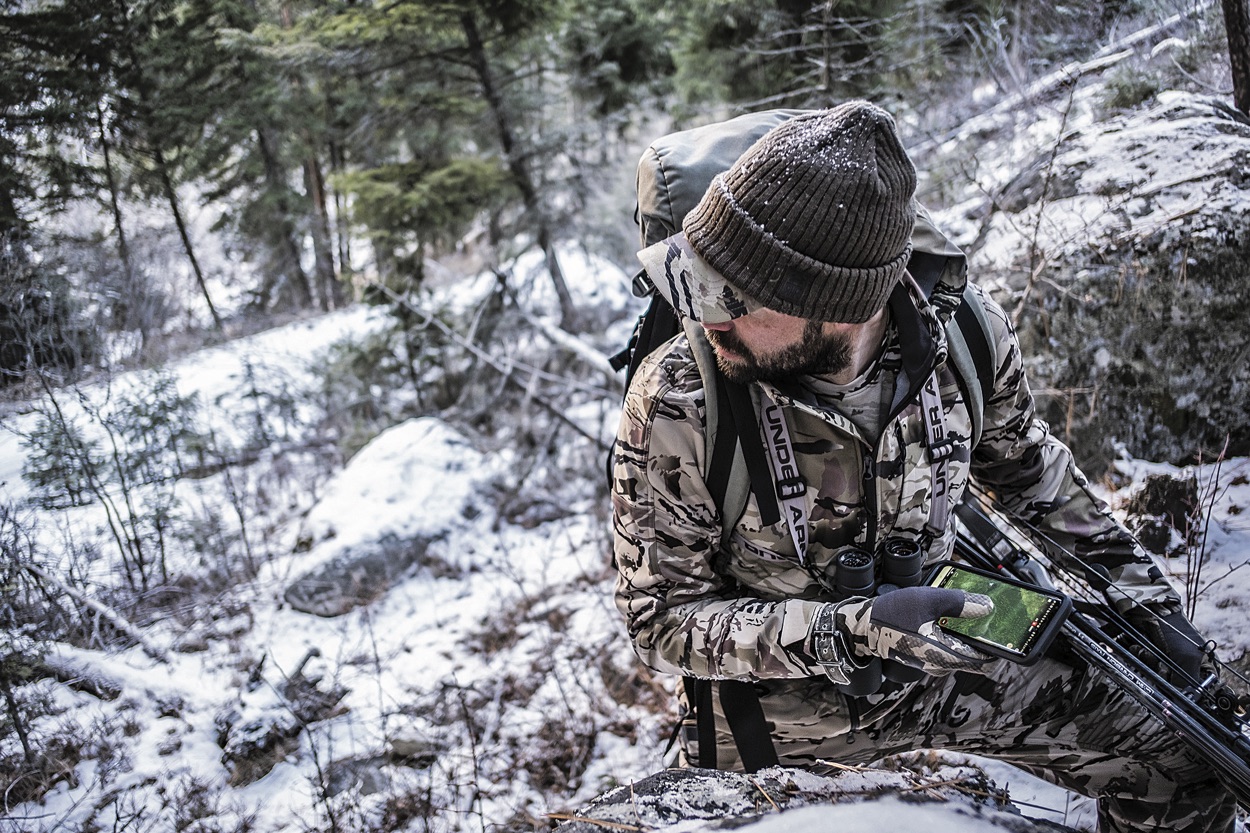
Free messaging bonus for the lost:
Out of battery? Well the uses are not dead. A phone can be used as a signal mirror. In a worst case scenario, a dead phone can still play a role in saving you.
- Point your phone screen toward the sun and reflect it onto something nearby. Once you have found the reflection, reflect the light onto your hand.
- Keep the light reflecting toward your outward stretched hand as you bring your phone to your eye, keeping both eyes open.
- Make a V with your fingers and put the light in the wide part. Then, align the V with your target and flash the light.
- Repeat sets of three flashes for SOS. These light signals can be seen as far as 10 miles away if done properly.
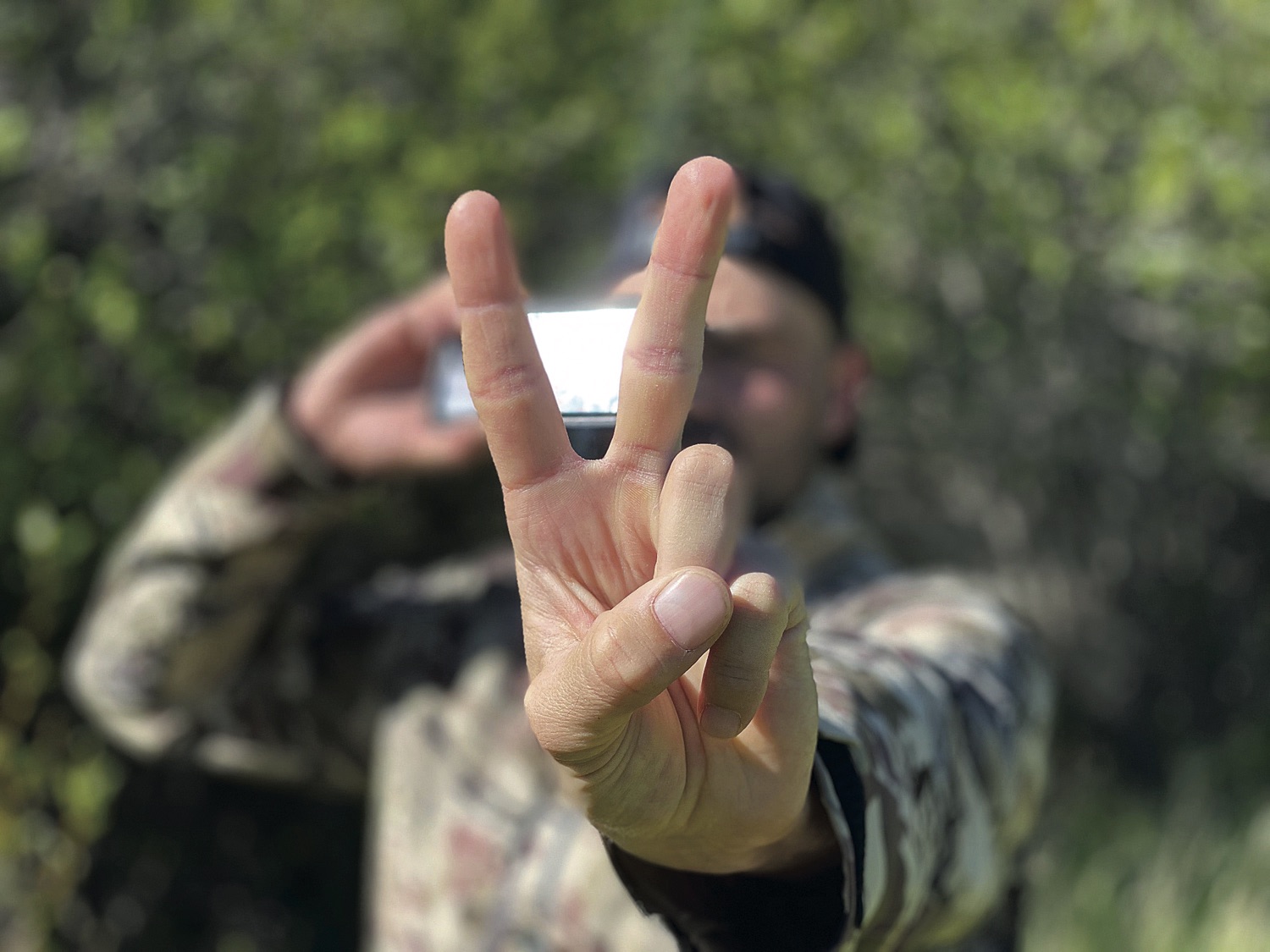
3. Cordage
Some form of cord should make its way into every hunter’s pack; either P-cord or a utility rope. It has so many uses and is something that I have on every trip.
Hanging Quarters
The most common use I have is hanging quarters after being successful. This keeps the meat clean and aids in cooling. I go straight from butchering the animal to hanging meat in a tree. Also, remember to make taking them down easy on yourself by using knots that can be undone easily.
Pack-out Antlers
While most good packs have ways to secure a load, extra cord always seems to make some awkward pack loads easier. I have also used it in the winter to drag elk quarters in the snow or aid in packing out large antlers either by horse or backpack by tying a stick between the antlers to keep them in place.
Shoelaces
It seems like a no-brainer, but I have seen guys break a lace and not think to replace it with cord.
Rifle Barrel Cleaner
Cut a length of cord twice as long as your barrel. Tie five or so knots toward the end of the cord, a couple inches apart. You want the knots to be approximately the diameter of the bore. You want good resistance but not to get stuck. Run the unknotted side from the action through the barrel and pull it through.
Tarp Shade
Place a rock in the corner of the tarp, tie around the rock and secure the line. This is great for a makeshift cook shack or even a great way to make a glassing shade in the middle of the day.
Dinner bonus for the hungry:
On a mule deer archery hunt a few years back, I was near a small stream loaded with trout. I took the p-cord apart and made some fishing line which allowed me to catch a few fish for dinner. That was the tastiest use of cord I have found!
4. Garbage Bag
If I were to pick the most useful and underrated piece of gear in my hunting kit, it would be hands down a thick contractor garbage bag. I have used them on more occasions than I can recall and take them on every trip.
Pack Liner
The primary reason I carry one is to line my pack during the pack out. It keeps the pack clean and prevents bacterial growth. The bag prevents blood from soaking into the fabric of the pack which will often get wet or be directly in the sun, promoting bacterial growth if left uncleaned and unable to dry out. I place the meat in game bags inside the plastic liner in the bag. The garbage bag is used during transport only and when stopped, the meat is removed and hung to keep air circulation.
Waders
Makeshift waders can come in handy for a quick and dry river crossing. Place your foot in the bag, then place your gaiters over your bag and boots. Tie the slack to your belt loop and you have a dry pair of hip waders. They have a limited amount of uses but work for a few crossings in a pinch.
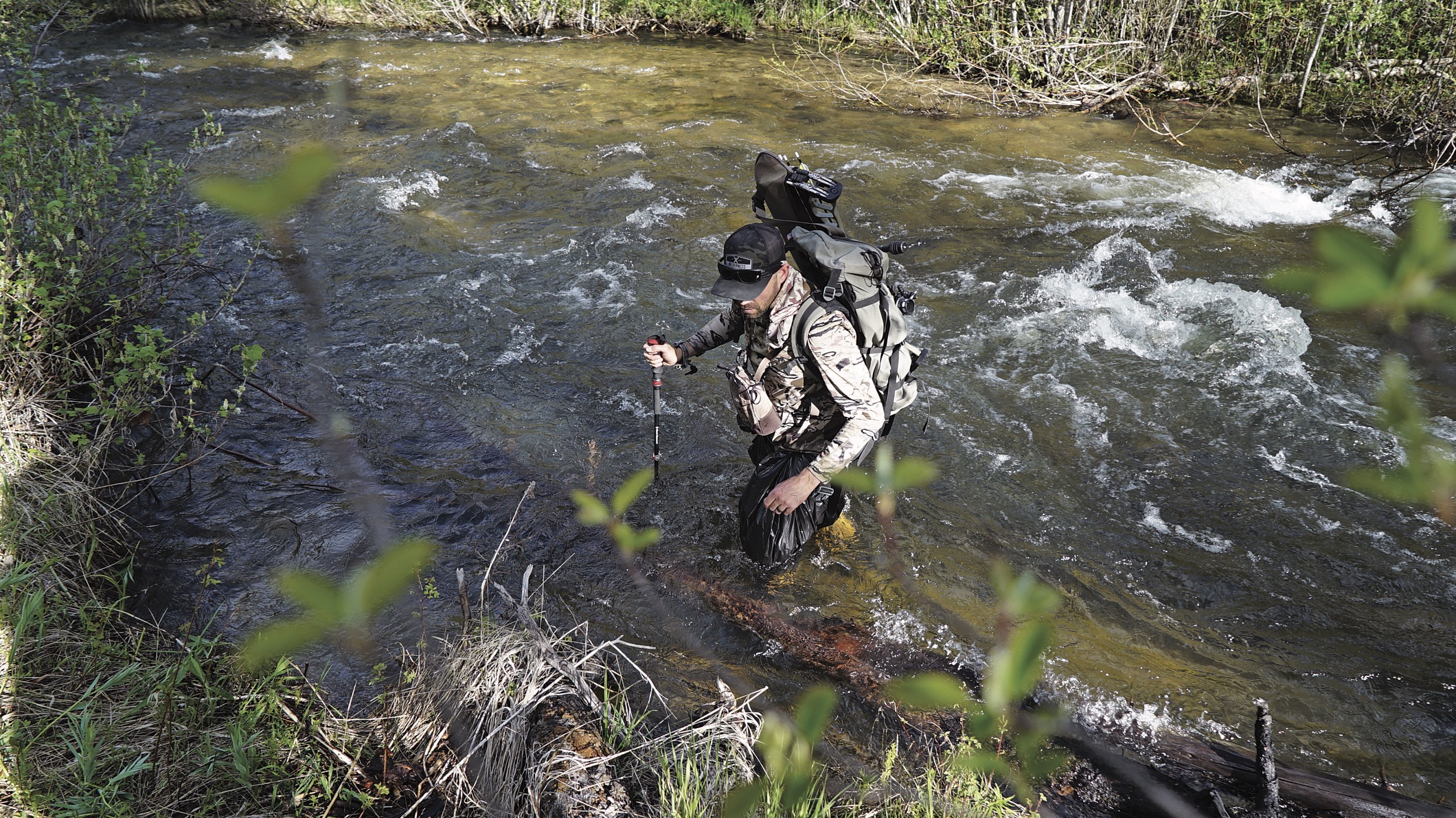
Snowmelt
High-country snow can be a great way to get plenty of camp water. Place snow in or on the bag in the sun and direct it to a bottle catch below. This will fill up your camp water so you don’t waste time or fuel trying to melt the snow.
Sleeping Pad
Stuff the bag with pine boughs or foliage to make a sleeping pad if yours fails or for extra insulation from the cold.
Pack Storage
Save room in your vestibule by placing your pack in the bag at night outside your tent. It keeps any rain off and gives you a little more room in your shelter.
Self-driving bonus for the tired
Last year I shot a cow elk at the top of the mountain at the end of the day in a bunch of snow. It was a long day but a pretty decent downhill back to the truck. On the last part of the descent, I took the game bags with meat and the plastic bag they were in out of my pack and sent the slick meat sled on its merry way. It slowly worked down the hill, breaking trail to the bottom on its own without incident.
5. Trekking Poles
Trekking poles are becoming more and more popular with hunters. They take a lot of the felt weight out of a pack out, help stabilize in rough country, and increase your travel efficiency. They are great for mountain hunts but add weight to your pack. That is unless you use them for multiple tasks to increase their value in the field.
Tent Poles
There are some great lightweight tent options that utilize trekking poles as tent poles, making them serve another purpose.
Shooting Sticks/Bino Stabilizers
Poles are a great platform for shooting or for added stability while glassing. Cross the straps of both poles to create a cradle then cross the sticks for a solid rest or to balance your optics.
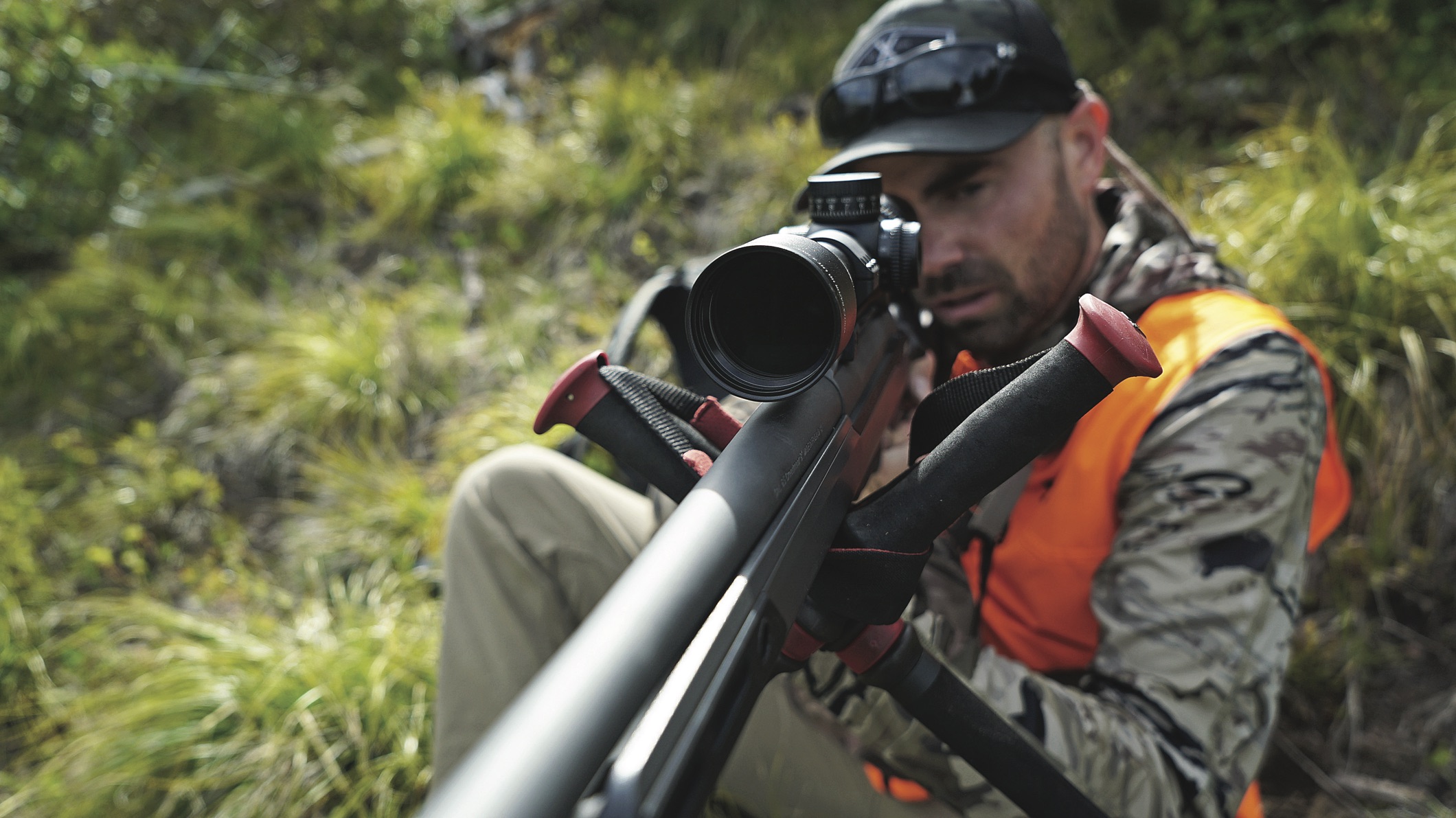
Rifle Sling Shoulder Holder
Sick of your rifle falling off your shoulder in rough terrain? Place your extra pole strapped to the side of your pack and slightly extend it above the pack bag. Throw the sling over the pole and secure the rifle by putting the bottom of the sling clip inside your waist belt.
Weapon bonus for the primitive:
Ever imagined a trekking pole working as a spear? I once used it to nab a ptarmigan in the mountains, hurling the pole and taking out some dinner in absence of a shotgun. There might have been a good amount of luck involved, but it did work that one time!
Conclusion
In my opinion, sometimes the best gear is just simple gear with imaginative uses - solving hunting problems with things you already have or carry. As a hunter I can talk gear for days, highlighting my favorites or the latest and greatest, but in the end, some of my favorite stuff is just getting clever with what I already carry.
Feel free to reach out via social media and let me know some of the different uses you have for your gear. You can find me on Instagram @remiwarren.




